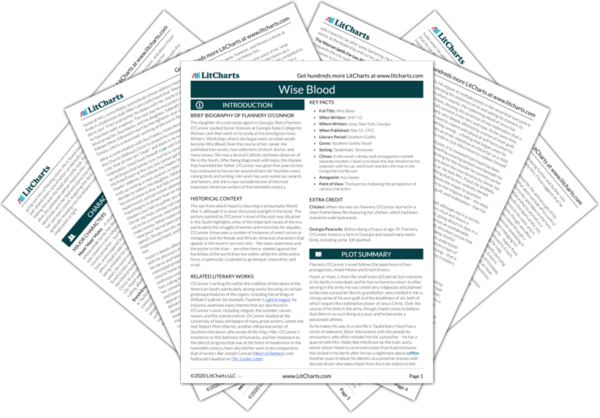Next
Summary
Wise Blood Study Guide |
Next
Summary
|
Welcome to the LitCharts study guide on Flannery O’Connor's Wise Blood. Created by the original team behind SparkNotes, LitCharts are the world's best literature guides.

Chicken. When she was six, Flannery O’Connor starred in a short Pathé News film featuring her chicken, which had been trained to walk backwards.
Georgia Peacocks. Before dying of lupus at age 39, Flannery O’Connor lived on a farm in Georgia and raised many exotic birds, including some 100 peafowl.